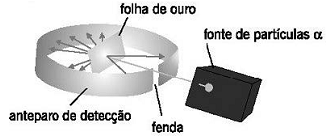Questões Militares Para cbm-mg
Foram encontradas 1.375 questões
Resolva questões gratuitamente!
Junte-se a mais de 4 milhões de concurseiros!
Leonardo da Vinci
Known as the greatest artist in the history of mankind, Leonardo da Vinci was also a great philosopher and scientist. Leonardo is the most influential figure in the Italian Renaissance and he is considered to be an inventive multi-genius.
Leonardo was born in 1452 in Vinci, Italy, as the child of Piero da Vinci, a notary, and Caterina, a country girl. He stayed with his father's family and they moved to Florence when he was just 12. At the age of 14, Leonardo started out his artist's apprenticeship at the studio of Andrea del Verrocchio (1435-1488), an Italian sculptor, goldsmith and painter.
The art of painting made Leonardo knowledgeable about anatomy and perspective. In addition to painting, Verrocchio's studio also offered technical and mechanical arts and sculpture. Leonardo had developed an interest in architecture so he went on to study engineering.
After a decade of highly original work as an artist, Leonardo wrote to several wealthy men to help finance his projects. The Duke of Milan, Ludovico Sforza (1452-1508), accepted his offer as Leonardo told him that he could design war weapons like guns and mines, and also structures like collapsible bridges. He lived in Milan with the Duke from 1482 to 1508, reportedly creating very innovational war machines. He also did painting and sculpture, as well as urban planning for large-scale water projects. There, he also wrote about making a telescope to view the moon.
Available at: <http://www.famousscientists.org/leonardo-da-vinc> (Edited).
Leonardo da Vinci
Known as the greatest artist in the history of mankind, Leonardo da Vinci was also a great philosopher and scientist. Leonardo is the most influential figure in the Italian Renaissance and he is considered to be an inventive multi-genius.
Leonardo was born in 1452 in Vinci, Italy, as the child of Piero da Vinci, a notary, and Caterina, a country girl. He stayed with his father's family and they moved to Florence when he was just 12. At the age of 14, Leonardo started out his artist's apprenticeship at the studio of Andrea del Verrocchio (1435-1488), an Italian sculptor, goldsmith and painter.
The art of painting made Leonardo knowledgeable about anatomy and perspective. In addition to painting, Verrocchio's studio also offered technical and mechanical arts and sculpture. Leonardo had developed an interest in architecture so he went on to study engineering.
After a decade of highly original work as an artist, Leonardo wrote to several wealthy men to help finance his projects. The Duke of Milan, Ludovico Sforza (1452-1508), accepted his offer as Leonardo told him that he could design war weapons like guns and mines, and also structures like collapsible bridges. He lived in Milan with the Duke from 1482 to 1508, reportedly creating very innovational war machines. He also did painting and sculpture, as well as urban planning for large-scale water projects. There, he also wrote about making a telescope to view the moon.
Available at: <http://www.famousscientists.org/leonardo-da-vinc> (Edited).

Disponível em:: <http://objetoseducacionais2.mec.gov.br/bitstream/handle/mec/12908/08_avaliacao.htm> . Acesso em: 11 jan. 2016.
Com esse experimento, é possível concluir:
Utilizando a lente de uma luneta, João consegue projetar a imagem de seu celular na parede branca de seu quarto.
Sobre a lente utilizada por João, é CORRETO afirmar:
Para descer por um toboágua, uma criança empurra para trás um suporte fixado acima da entrada desse brinquedo, a fim de que ela seja impulsionada.
Supondo que esse toboágua tenha 19,8 metros de altura, que não possua atrito e que a água não influencie na queda da criança e considerando que essa criança chega ao solo com uma velocidade de 72 km/h, é CORRETO afirmar que a velocidade inicial dela é de: